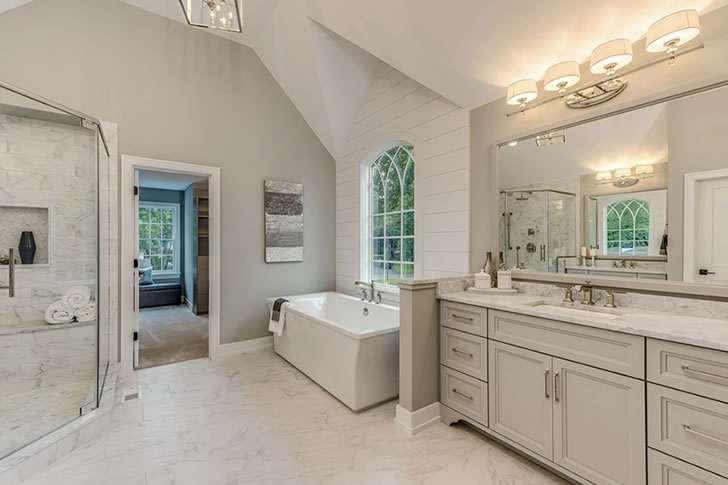Budget-Friendly: Cheap Bathroom Transform For Seniors
For many seniors, remodeling a bathroom is not just a matter of updating an old space but making it more accessible and safe as mobility becomes more of an issue. However, bathroom renovations can be costly.

Understanding Bathroom Remodeling Costs
The cost of remodeling a bathroom can vary widely based on several factors:
- Scope of Remodel: Costs will vary depending on whether the remodel is a few minor updates or a comprehensive overhaul.
- Quality of Materials: High-end materials can drive up costs significantly.
- Labor: Professional installation can be a substantial portion of the budget.
Plan Your Remodel Carefully
- Define Your Needs: For seniors, bathroom remodels often focus on accessibility. Features like walk-in tubs, grab bars, higher toilets, and non-slip flooring are essential. Identifying these needs early can help prioritize spending.
- Set a Budget: Once needs are defined, set a realistic budget that includes a cushion for unexpected costs, which are common in renovations.
Cost-Saving Strategies for Bathroom Remodeling
- Limit Changes to Plumbing: Keeping the toilet, sink, and tub in the same place can save thousands of dollars that might otherwise go into rerouting plumbing.
- Refinish Instead of Replace: Refinishing the existing bathtub, shower, sink, or tiles can be much more cost-effective than full replacement. For example, refinishing a tub might cost between $300 and $600, whereas buying a new tub can cost from $500 to $2,000, not including installation.
- Do It Yourself: Simple tasks such as painting or installing hardware can be done without hiring a professional. DIY can save on labor costs, which can sometimes account for up to 50% of the project’s budget.
- Shop Around for Contractors: If professional help is needed, it pays to shop around. Getting multiple quotes and checking references can lead to finding a contractor who offers competitive rates and has experience working on senior-friendly bathroom designs.
- Look for Discounts: Seniors may be eligible for discounts at hardware stores or from contractors looking to fill their schedule during slower periods. Always ask about possible discounts.
Utilize Tax Credits and Grants
Some local governments provide grants or tax credits for renovations that increase home accessibility for seniors. Contact local housing authorities or community development offices to inquire about potential programs.
Consider Financing Options
If paying out of pocket isn’t feasible:
- Home Equity: For seniors with equity in their homes, a home equity loan or line of credit can provide the funds needed for remodeling at relatively low interest rates.
- Contractor Financing: Some contractors offer financing plans, which can spread the cost over a manageable period.
Increase Functionality with Cost-Effective Upgrades
- Grab Bars and Safety Features: Installing grab bars in the shower and near the toilet can prevent falls. These are typically inexpensive but provide significant safety benefits.
- Higher Toilet Seats: Rather than installing a new toilet, consider a toilet seat riser which can be less costly.
Slip-Resistant Flooring: Instead of replacing the floor, add slip-resistant coatings to existing tiles.
Monitoring Long-Term Benefits
It’s important for seniors to consider how remodeling choices will benefit them in the long run. Upgrades that enhance safety and accessibility can prevent future medical costs due to accidents, making them a wise investment.
Conclusion
While bathroom remodeling can be a significant expense, proper planning and strategic choices can help manage these costs effectively. Seniors must focus on making modifications that enhance safety and accessibility, use cost-saving strategies wisely, and explore all available resources for financial assistance. By taking a thoughtful approach, seniors can achieve a functional, stylish bathroom remodel that fits their budget and meets their specific needs.







Recent Comments